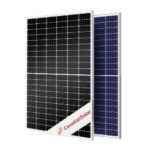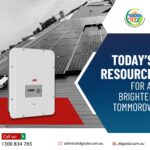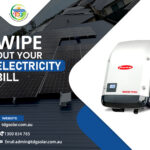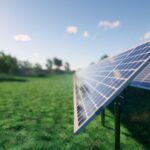How Do Solar Panel Works -We all know that solar energy is captured using solar photovoltaic technology, which turns sunlight into electricity, but few people understand the science underlying it. People's first query when they enter the mainstream solar energy market is "How Do Solar Panels Work." In this post, we'll go over how solar panels generate electricity for your home and your working place.
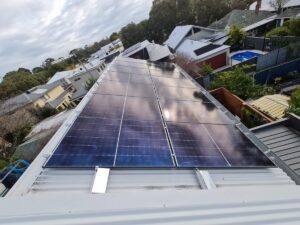
Solar does not create electricity all of the time, but it does so when it is most required. This covers times when electricity demand is highest, such as throughout the day and during hot sunny days. Australia is one of the sunniest countries in the world, making it ideal for putting the sun to work, particularly during these peak times. For installing solar panels in your home or working place you can contact us at 1300TDGSOL (1300 834 765) or you also send an email to admin@tdgsolar.com.au.
Photovoltaic and concentrating solar-thermal power technologies, electrical grid system integration, Solar radiation basics, and non-hardware factors of solar energy are all covered in the resources and information listed below.
Table of Contents
How do Solar Panels Work?
When sunlight particles knock electrons loose from atoms, a flow of electrons is set in motion, which is how a solar panel operates and creates power. When electrons move across a circuit, electricity is generated. A solar panel is made up of several cells, and multiple panels can be connected to form a solar array. The option is more solar panels you install, the more energy you'll generate. Basic Solar Energy Generation and Transmission Steps are outlined below:
- An electric field is produced when the sun shines on the solar panels.
- The produced electricity is sent through a conductive wire at the panel's edge.
- The cable moves the electricity to the inverter, where it is converted from DC to AC and appropriated to power homes.
- Another wire connects the inverter to the property's electric panel, which distributes the AC energy throughout the building as needed.
- Any power that is not consumed at the time of generation is sent into the utility electrical grid through the utility meter. The meter will run backward due to the flow of power, crediting your house for a surplus generation.
Types of Solar Energy Technologies:
There are two main types of solar energy technologies such as:
- Photovoltaics Basics - PV, which is used in solar panels, is probably the most well-known. When the sun shines on a solar panel, the solar energy is absorbed by the PV cells in the panel. Solar energy causes electricity to flow by forcing electrical charges to shift in response to an internal electric field in the cell.
- Concentrating Solar/ Thermal Power Basics - Mirrors reflect and focus sunlight onto receivers, which collect solar energy and convert it to heat, which can subsequently be utilized to generate electricity or stored for later use in concentrated solar-thermal power (CSP) systems. It's mostly found in very large power plants.
What are Solar Panels Made of?
A typical solar module includes a few essential parts:
|
Solar cells |
We’ve talked about these a lot already, but solar cells absorb sunlight. When it comes to silicon solar cells, there are generally two different types: monocrystalline and polycrystalline. |
Glass Casing |
Provides durability and protection for solar cells. |
|
Insulation Layer and Back Sheet |
These are under the glass exterior and protect against heat dissipation and humidity inside the panel, which can result in lower solar panel performance. |
|
Anti-Reflective Coating |
Increases sunlight absorption and gives the cells maximum sunlight exposure. |
|
12V Wire |
Regulates the amount of electricity transferred to your inverter. |
How Does a Solar Cell Generate Electricity?
- When exposed to sunlight, a solar cell is made up of two layers of silicon that have been processed to allow energy to flow between them.
- One layer has a positive charge, whereas the other has a negative charge.
- While photons enter the layers, they yield their energy to the silicon atoms in the frame of electrons.
- Electrons flow through the junction between the positive and negative layers when photons strike the silicon layers, creating an electric current.
How does grid-interactive connection work with solar panels?
When you want to save money on your electricity bill, you should use this type of technology. You will save the per-unit amount multiplied by the units generated by the Solar system in this type of system. When your home's electricity demand is low and solar generation is high, your solar system will feed the extra energy back into the grid. When your electricity use is high and solar generation is low, your solar system will use the excess energy from the grid to power your home.
How does a Standalone System connection work with solar panels?
When there is no electricity or the grid is down, this technology is utilized as a backup to protect against power outages. Also, in some situations, if a person wants to generate his or her green energy! Because this is a battery-based system, the energy generated by the solar panel is stored in the batteries that are linked to it. You can use this technique to run some of your vital equipment/appliances even if the grid is down if there are no daylight hours.
How does a Hybrid System connection work with solar panels?
If your home's electricity use is less than the energy supplied by the solar system, the extra energy will be stored in the system's batteries. If the house's electrical use exceeds the solar energy generation, the extra needs will be met by batteries. This system is a hybrid of off-grid and on-grid solar panels. If the house's electricity use is less than the energy provided by solar panels. The batteries are fully charged, the extra energy generated is fed into the grid.
3 Factors That Impact Solar Electricity Production:
Houses should consider three major factors, during and after the installation of their residential solar systems.
Shade -
While shade Solar panels will not produce as much energy as those in the sunshine. Solar may not be the greatest option if your roof is shaded by un-trimmable trees or buildings.
SEASONALITY -
Just like the weather, Solar energy production fluctuates day by day. A cloudy winter day will not produce as much as a beautiful summer day. However, it is significant to consider the big picture completely for the year. Snow can reflect light and so boost PV performance. In winter, it will only be a solar adversary if the panels are covered in slush.
Azimuth -
The compass bearing from which the daylight is coming is known as the sun-powered azimuth point. In the Northern Hemisphere, the sun sparkles from the south around early afternoon. While in the Southern Hemisphere, the sun sparkles from the north. A sun-powered home board's energy yield could be diminished by up to 35% if the azimuth point is mistaken. The optimal choice is usually an azimuth of zero (facing the equator).
Contact Details
|
Name |
TDG SOLAR |
|
Address |
1/48 Vinnicombe Drive, Canning Vale WA6155 Perth |
|
Phone Number |
1300TDGSOL (1300 834 765) |
Frequently Asked Questions (FAQs) Regarding How Solar Panels Work
1) How do solar panels generate electricity for your home?
Generating an electric current is the first step of a solar panel working, but the process doesn’t end there. Here’s how solar arrays create a usable electricity system for your home.
2) How do solar panels actually work?
Solar panels are usually made from silicon or another semiconductor material installed in a metal panel frame with a glass casing. When this material is exposed to photons of sunlight it releases electrons and produces an electric charge.
3) Do solar panels work in rain?
While solar panels achieve park performance in direct sunlight, they do generate electricity in cloudy and rainy conditions.
4) Do solar panels work at night?
Solar energy systems only operate during the day. This is because the power from the sun is key to how solar panel turns light into electricity.

